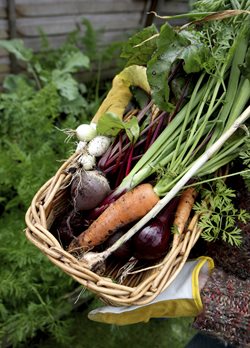There are few things more rewarding than growing your own vegetables and reaping the rewards in the form of a delicious stew, curry or as an accompaniment to a succulent Sunday roast.
That feeling of satisfaction when you’ve cultivated your own crops, right through from planting to harvesting, is one that’s difficult to match for all the keen gardeners out there. It’s vital that you carefully protect your veg plot, otherwise the trimmings around your Christmas dinner could look decidedly measly, and one great way to do this is by employing crop rotation.
But if you’re wondering what are the advantages of crop rotation and how you go about it or indeed what crop rotation even is, here at Premier Polytunnels, we can provide the answers.
 What is crop rotation?
What is crop rotation?
The idea behind crop rotation is to grow certain categories of vegetables in different parts of your garden each year. So, for example, even if you’ve produced an excellent collection of carrots and potatoes, don’t feel too tempted to stick with the same crops in the same spots. Instead, swapping them about can reduce the risk of crop-specific diseases or pests, among a host of other benefits.
Why is crop rotation important?
The advantages of crop rotation are plentiful, and it can make a huge difference to your vegetable plot if done with due care and attention. For example, rotating your crops can help to keep weeds to a minimum. That’s because some vegetables, such as potatoes, produce large foliage, which quashes the growth of weeds and subsequently reduces their number when you plant the next crops.
Additionally, you can significantly diminish any harm from pests and diseases, which usually attack certain vegetable families. Of course, you can also help protect against these irritants with the use of polytunnels, cloches and fruit cages but that’s not the only way to lessen the problem.
If you change up your crops in each bed on an annual basis, any pests will wane in the intervening period without their host plant and will be less able to develop and spread, meaning you’ll gain a healthier, more wholesome harvest as a reward for all your hard work.
Crop rotation can also improve the fertility of the soil, which will only boost the growth of your precious veggies. That’s because different plants have a range of nutritional requirements, and regularly changing your beds around means your soil shouldn’t build up any potentially harmful nutrient deficiencies.
Which vegetables are suitable for crop rotation?
In truth, you can rotate almost all your vegetables and the practice can be very easily adopted if you have an allotment or kitchen garden. The only vegetables which may not marry up with your crop rotation are the perennial ones, such as asparagus and rhubarb, as they will live longer and are likely to play havoc with your rotation schedule, so it might be best to treat those as a separate entity when arranging your timetable.
How should I plan my crop rotation?
All good gardeners know that preparation is everything and that’s no different when it comes to crop rotation. You’ll need to plan carefully and, once you’ve set aside a section of your garden for those perennial vegetables, it may be worth dividing up the remainder according to groups of crops.
For example, you may want to identify one bed for potatoes and tomatoes, one for beetroot, carrots and celery and another for sprouts, cabbage and turnips. Once you’ve done that, draw up a schedule of how and where you’re going to move each set of crops every year, so that when it comes to rotation time, you’ll know exactly what’s required!